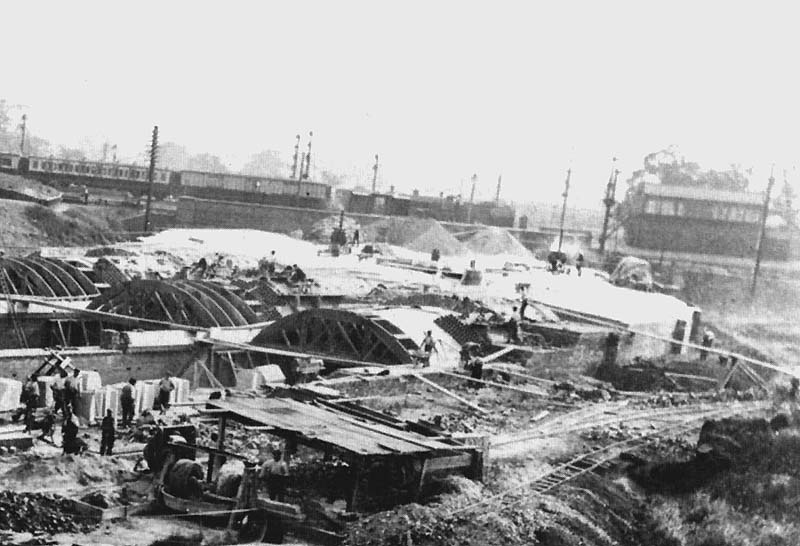|
|
 |
 |
|
London North Western
Railway:

Midland
Railway:

Stratford
Midland Junction Railway
|

|
LMS Route: Trent Valley Line
LMS Route: Nuneaton to Leamington
Nuneaton Station: lnwrns1680b
 |
Close up showing a piece of equipment being powered by the belts
operated by the traction engine and the Trent Valley line in the distance. To
the right of the image on the narrow gauge railway a man can be seen pushing a
wagon. The timber framing are formers used to build brick arches as part of the
diversion of the River Anker. The LNWR coaches in the background are bogie
vehicles and appear to be part of an up express passing behind the sidings.
Mining engineer Richard Trevithick (1771-1833) of Cornwall built the first
self-moving engine in this country. He devoted his life to the improvement of
the steam engine from its simple beginning as a beam engine pumping water from
mines. Unlike James Watt, Trevithick favoured higher steam pressures that gave
greater power from smaller cylinders. From 1800 to 1815 he built several steam
road carriages, the first steam railway locomotives and a large number of
stationary steam engines. Nothing he did however was commercially successful
and he died in debt. Ransomes of Ipswich introduced the traction engine, as we
begin to know it in 1840, who were established agricultural implement makers of
the time. Other engine builders were not far behind, some of the early ones
being Aveling, Burrell, Clayton, Fowler and Garrett. Courtesy of 'Steam
Up'.
 back back

|
|
|
